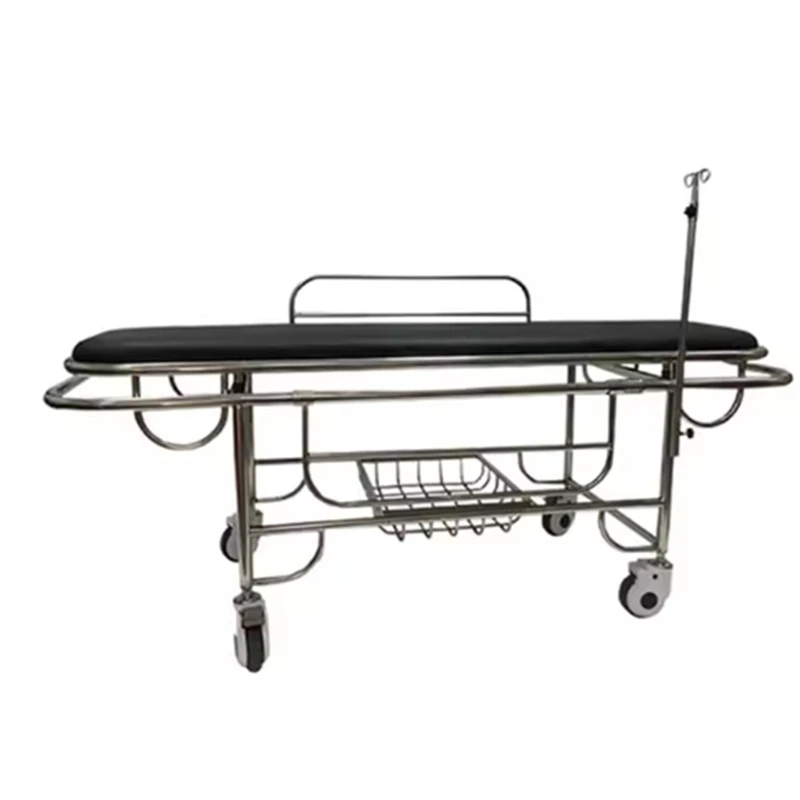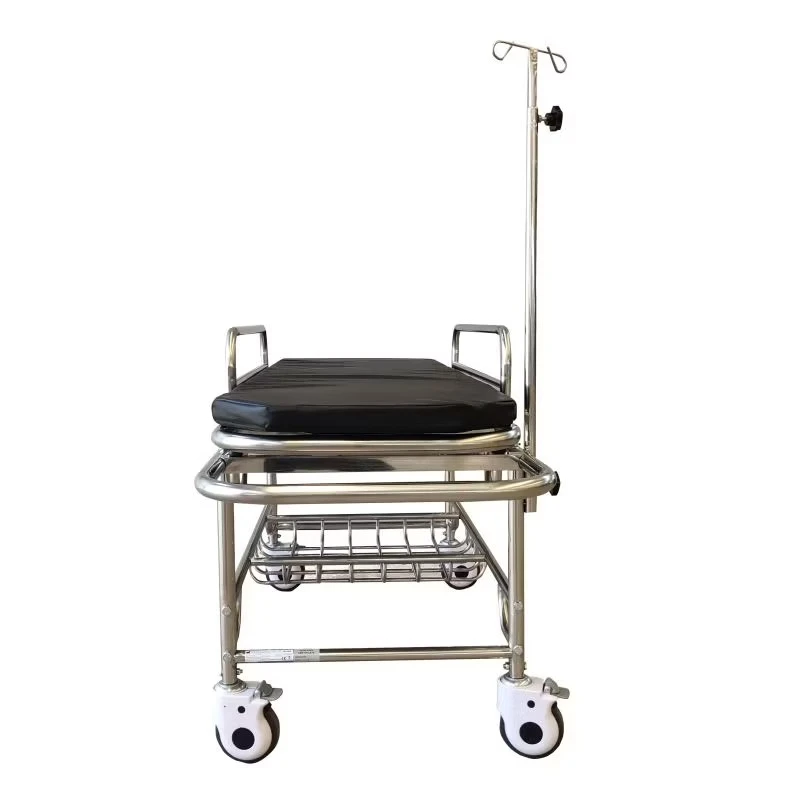Hospital Stretcher Trolley – Durable, Adjustable, Mobile
A Field Report on Modern Transfer Stretchers: What Matters in the Real World
If you’ve ever sprinted a corridor with an unconscious patient and a monitor dangling off the side, you know the difference between a good and a great hospital stretcher trolley. I’ve toured more ERs and ICUs than I can count, and—actually—details like caster diameter, side-rail ergonomics, and frame finish turn out to be the unsung heroes of safe transfers.

Product Snapshot: Medical Equipment Transfer Stretcher
Origin: Zhouhu Village, Jizhou Zone, Hengshui City, Hebei Province, China.
- Dimensions: L1900 × W649 × H730 mm (compact footprint, surprisingly maneuverable).
- 304 stainless steel: brush-finished panel, polish-finished pipe for corrosion resistance and easy wipe-down.
- Two-sided foldable stainless-steel side rails for quick patient access.
- Four anti-winding, noise-free castors Φ125 mm with brakes—moves smoothly; staff often remark on the quiet roll.
- Equipped with a practical underframe plastic basket.
- Optional: I.V. pole, mattress. I’d add both; teams usually do.
| Model | Medical equipment transfer stretcher |
| Overall size | L1900 × W649 × H730 mm |
| Frame material | 304 stainless steel (ASTM A240 compliant ≈) |
| Castors | Φ125 mm, anti-winding, noise-reduced, with brakes |
| Side rails | Foldable, dual-side, stainless steel |
| Load capacity | Around 200–250 kg typical for 304 SS frames; confirm rating with vendor ≈ |
| Options | I.V. pole, mattress |

Where It’s Used and Why It Works
Application scenarios: ER intake, imaging transfers (CT/MRI prep rooms), day surgery, and intra-ward moves. Advantages? Low rolling resistance, fewer snag points, metal that shrugs off disinfectants, and a tidy under-basket for lines and PPE. Many nurses say the fold-down rails save a few seconds in critical turns—small wins add up.
Industry Trends I’m Seeing
- Quieter mobility systems to cut alarm fatigue and nighttime disturbance.
- 304/316 stainless adoption for infection control and longer service life.
- Modular accessories—IV poles, oxygen holders, easy-clean mattresses.
- Compliance alignment with EN 1865-1 and ambulance interface expectations (EN 1789) in some facilities.

Process, Materials, and Testing (How It’s Built)
Materials: 304 stainless tube and sheet, TIG-welded joints, brush/polish finish to reduce bio-burden traps. Methods: deburring, weld passivation, and smooth-radius bends to protect linens and skin. Typical tests I ask vendors about: static load (often 1.5× rated load for 10 min), rolling fatigue over thresholds, brake holding on inclines, salt-spray corrosion (ISO 9227) for finish resilience, and caster endurance. Service life? About 5–8 years with routine maintenance, sometimes longer in lower-volume units.
Vendor Landscape (Quick Comparison)
| Vendor | Frame & Finish | Compliance & Docs | Typical Lead Time | Notes |
|---|---|---|---|---|
| Zhaofa Medical (China) | 304 SS, brushed/polished | ISO 13485/CE docs available upon request ≈ | ≈ 3–6 weeks | Good value; customizable options |
| Generic Import A | Mixed SS coatings | Basic CoC; limited testing data | ≈ 2–8 weeks | Budget-first; verify specs carefully |
| EU Premium B | 316 SS option, high polish | EN 1865-1/EN 1789 set, extensive QA | ≈ 6–10 weeks | Top-tier finish, highest price |
Customization and Documentation
- Mattress density and cover material (seams sealed for IP-rated cleanability ≈).
- IV pole type, oxygen cylinder holder, labeling in local language.
- Paperwork: ISO 13485 QMS, CE marking under MDR where applicable, risk files per ISO 14971.

Field Notes: A Small Case Study
A county hospital switched older carts for this model across ER and imaging transfer. After three months, the facilities lead told me noise complaints at night were down “about 30%” and porters liked the brake feel—firmer engagement, less foot fiddling. One nurse added (to be honest, a bit grudgingly) that the under-basket kept lines and wipes off the mattress, which cut a few re-cleans per shift.
If you’re spec’ing a hospital stretcher trolley, check caster quality, weld smoothness, and documentation depth. It seems simple, but these are the difference between a workhorse and a headache. In fact, ask for load, brake, and corrosion test reports; a reputable supplier will share them.
Standards and References
- EN 1865-1: Medical vehicles and their equipment – Stretchers and other patient handling equipment.
- EN 1789: Medical vehicles and their equipment – Road ambulances.
- ISO 13485: Medical devices – Quality management systems – Requirements for regulatory purposes.
- ASTM A240/A240M: Standard Specification for Chromium and Chromium-Nickel Stainless Steel Plate, Sheet, and Strip.
- ISO 9227: Corrosion tests in artificial atmospheres – Salt spray tests.
- ISO 14971: Medical devices – Application of risk management to medical devices.
Note: Always verify final specifications, certifications, and local regulatory conformity before procurement. For more details on this hospital stretcher trolley, consult the manufacturer’s technical file and test summaries.




































